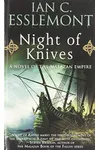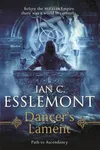Step into the sprawling, spellbinding world of the Malazan Empire, where gods, mortals, and ancient magics collide in an epic fantasy saga unlike any other! Created by Canadian authors Steven Erikson and Ian C. Esslemont, this series is a towering achievement in world-building, weaving intricate narratives across continents and millennia. With its roots in archaeology and role-playing games, the Malazan Empire captivates readers with its rich lore, morally complex characters, and themes that probe the depths of power, history, and human resilience.
Whether you’re a seasoned fantasy fan or a curious newcomer, the Malazan Empire offers a thrilling, challenging journey that redefines what epic fantasy can be. Ready to explore a universe where empires rise and fall, and every choice echoes through time?
How Malazan Empire Began
In the early 1980s, Steven Erikson and Ian C. Esslemont, both archaeologists and avid gamers, forged the Malazan world as a backdrop for their GURPS role-playing campaigns. Their shared passion for history and storytelling birthed a universe teeming with diverse cultures, ancient ruins, and magical systems. Erikson’s first novel, Gardens of the Moon, hit shelves in 1999 after a decade of refinement, launching the flagship Malazan Book of the Fallen series. Esslemont joined with his Novels of the Malazan Empire, expanding the world they co-created. Their collaboration, rooted in friendship and creativity, set the stage for a saga that’s as ambitious as it is immersive.
The Heart of Malazan Empire
The Malazan saga spans multiple series, with Erikson’s Malazan Book of the Fallen (10 books) and Esslemont’s Novels of the Malazan Empire (6 books) at its core. Gardens of the Moon introduces the Malazan Empire’s conquests, following a diverse cast—from soldiers to mages—amid political intrigue and divine schemes. Deadhouse Gates shifts to a rebellion in the Seven Cities, blending heart-wrenching sacrifice with epic battles. Esslemont’s Night of Knives explores a pivotal night in the empire’s history, while Return of the Crimson Guard delves into the mercenary company’s role in imperial turmoil.
The series’ themes are as vast as its world: power’s corrupting allure, the weight of history, and the resilience of the human spirit. Its setting, a tapestry of continents like Genabackis and Quon Tali, pulses with magical Warrens, ancient races like the Tiste, and gods meddling in mortal affairs. The dense prose and nonlinear storytelling demand attention but reward readers with unparalleled depth, earning praise for challenging fantasy conventions.
Why Malazan Empire Resonates
The Malazan Empire has left an indelible mark on epic fantasy, inspiring a devoted fanbase and influencing authors with its uncompromising complexity. Its refusal to spoon-feed information mirrors real-world histories, inviting readers to piece together its sprawling puzzle. The series’ exploration of war’s brutality and humanity’s flaws resonates in today’s nuanced fantasy landscape. With over 4.5 million books sold combined (Erikson’s 3.5 million and Esslemont’s 1 million), its cultural impact is undeniable, spawning forums, fan art, and ongoing prequel trilogies like Erikson’s Kharkanas Trilogy and Esslemont’s Path to Ascendancy.
- First published: 1999 (Gardens of the Moon)
- Total books: 22 across main series, prequels, and novellas
- Awards: Gardens of the Moon shortlisted for World Fantasy Award
- Authors: Steven Erikson and Ian C. Esslemont
Grab Gardens of the Moon and dive into the Malazan Empire’s epic fantasy realm, where every page unveils a new layer of wonder and intrigue!









